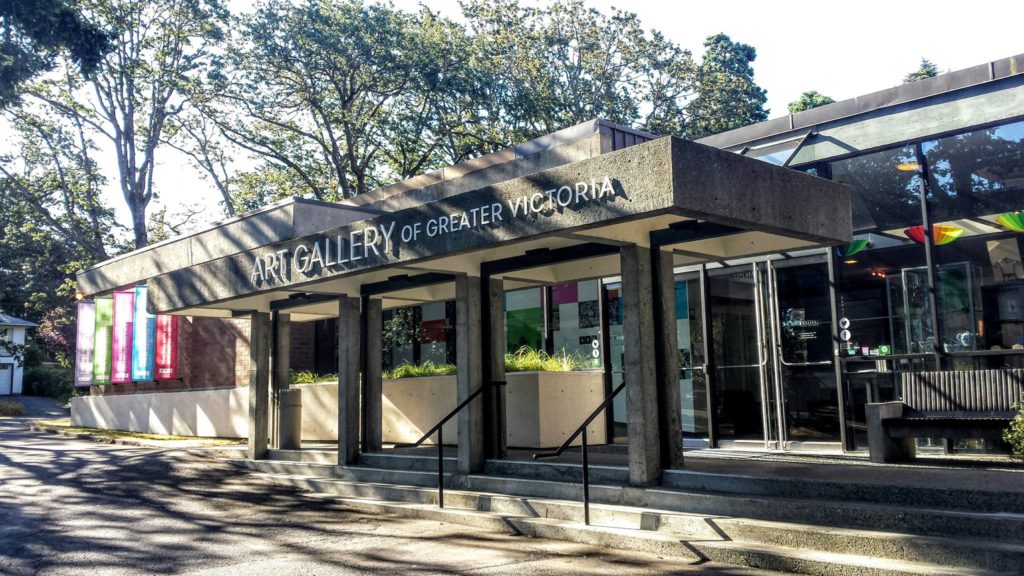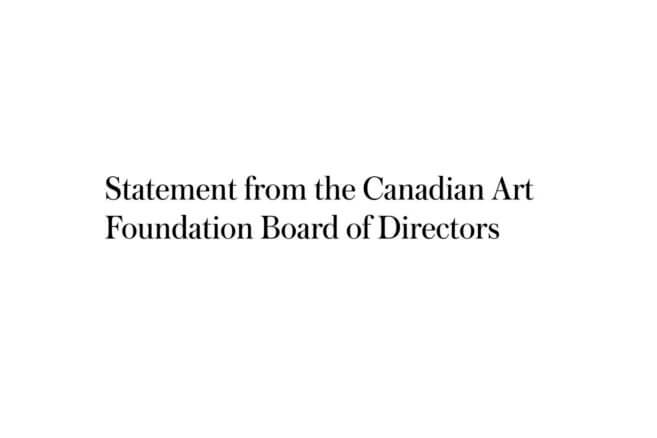It’s been a big, big week for art news in Canada so far. The Sobey Art Award longlist came out on Tuesday, as did a decision in the Federal Court of Appeal that favoured Canadian museums over an auction house. Also on Tuesday, at the Canadian Museums Association conference, the federal government pledged more than $600,000 towards helping museums meet Truth and Reconciliation Commission Call to Action 67—a move that dovetails with the release of a new, much-needed Indigenous Repatriation Handbook from the Royal BC Museum, as well as a new agreement between the Canadian Museum for Human Rights and Indigenous artist Carey Newman. In other reporting, it came to light that Métis artists are not allowed to apply to a Conseil des arts et des lettres du Québec program for Indigenous people—even though Métis are recognized as Indigenous in the Canadian Constitution. Last but not least, a Toronto jury acquitted a former OCADU instructor of sexual assault charges—the bringing-forward of which prompted the school to create an official sexual assault prevention policy.
$2.8 million donated to the Art Gallery of Greater Victoria. The donation was made on behalf of late artist Anthony Thorn, who had promised monies for the AGGV’s NEXT Gallery project in 2014. AGGV director Jon Tupper said in a release that Thorn’s commitment means “we have been able to secure private donations to The NEXT Gallery project that exceed our initial targets; together with the donation from the Province of British Columbia we are closer to our ground-breaking than ever before.” The AGGV also recently unveiled updated drawings of the Next Gallery project by HCMA Architecture and Design. (press release)
Plan released for new $140-million Art Gallery of Nova Scotia. The new plan sees the gallery placed a few blocks away, on the water. The 13,000-square-metre facility will feature large public spaces “and additional space to better showcase the dynamic provincial art collection, much of which has been in storage for many years,” the CBC reports. CBC says the building could cost as much as $140 million, and the provincial government is willing to chip in up to $80 million, the feds, $30 million. (CBC)
An Indigenous artist is concerned about treatment by the Canadian Border Services Agency. Returning from a vacation abroad, emerging artist Tim Hogan was detained for 5 hours and X-rayed, among other procedures. “As officers with the Canada Border Services Agency examined his bag and his phone, he asked what grounds they had for suspecting him,” CBC reports. “They said because I’m an artist,” Hogan told the CBC. “They read it on my file and said that was a trigger, because they don’t believe that artists could even afford to go on vacation, basically.” (CBC)
Province of Ontario pulls $20 million in funding from OCAD University expansion. “OCAD University is determined to move forward with a campus expansion project after receiving “devastating news” that the province is withdrawing millions in funding,” the Toronto Star reports. “The move by the Progressive Conservatives affects the Creative City Campus, a downtown Toronto project that’s been in the works for about a decade. It involves adding 50,000 square feet of new space and renovating 95,000 square feet of existing space.” (Toronto Star)
How a Canadian art mystery was discovered in Louisiana—and solved by Westworld star Louis Herthum. That’s the headline on a Globe and Mail feature about Vancouver art dealer Uno Langmann and how he helped Herthum verify that some paintings bought cheaply in the States were actually by Lawren Harris. Langmann also helped Herthum return the work to Canadian public gallery collections. (Globe and Mail)
Remembering 49th Parallel. CBC has dug into its archives to resurface the years when Ottawa actually paid for Canada to open a gallery of its own in New York City. “420 West Broadway receives up to 6,000 visitors every Saturday and a steady stream of people through the week,” reporter John Grier told viewers on The National on April 11, 1981, less than a month after the Canadian gallery opened. (CBC)
How might the Sackler saga affect philanthropy in Canada? The CBC does a deeper dive on the question in a recent feature. National Gallery of Canada Foundation CEO Karen Colby-Stothart told reporters the National Gallery philanthropy agreements always include an “off-ramp, both for the donor and for the beneficiary.” She added: “Certainly every foundation in Canada is going to be looking at its policies, making sure that this conversation happens in their boardrooms.” (CBC)
Camille Georgeson-Usher is the transitional executive director at the Aboriginal Curatorial Collective. Georgeson-Usher fills the gap left by Clayton Windatt, who led the organization for three years and supported as a volunteer for many years before that. “As a core component of their 2018-2023 Strategic Plan, the ACC-CCA set the goal of transitioning to a new, more decentralized organizational model that will see a restructure of the Executive Director role,” says a release. (ACC-CCA Facebook Page)

 The Art Gallery of Greater Victoria. Photo: Facebook.
The Art Gallery of Greater Victoria. Photo: Facebook.




